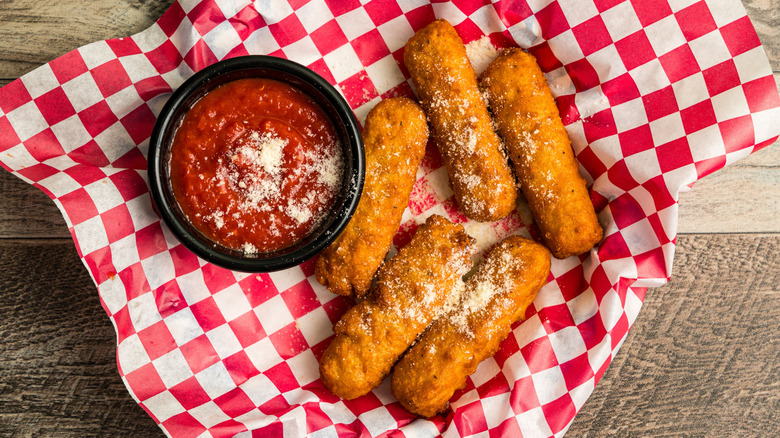The Difference Between Hors D'oeuvres And Appetizers
When you hear "hors d'oeuvres," you may think of skewered shrimp and mini potato knishes passed around on a tray by a cater waiter. When you hear "appetizers," piping hot mozzarella sticks you want to scarf down immediately that require at least two napkins to clean your greasy hands or a classy heirloom tomato and burrata salad might come to mind. Both hors d'oeuvres and appetizers are served before the main course to satiate hunger until meal time, but what's the true difference between them? To start, their timing and purpose.
Appetizers are the first course of a sit-down meal and intended to hold diners over until their entrée arrives. They are a structured part of the dining experience and can either be shared or enjoyed solo, depending on the occasion. Hors d'oeuvres, on the other hand, are served separately from dinner. Typically elegant and varied finger foods you can eat while still holding a drink in your other hand, hors d'oeuvres are present at cocktail hours at weddings and other special events. They are not considered part of any meal and are typically eaten when you're standing up, mingling in nice clothes. You probably wouldn't eat mozzarella sticks standing at a tiny table, wearing fancy clothes, lest marinara sauce drips on your cocktail dress and you get cheese stuck on your made-up chin. But a mini meatball on a mini fork? That you can do.
The origins of hors d'oeuvres and appetizers and how to serve them
Serving small portions before meals has been a staple across the world for centuries (think tapas in Spain or olives in Greece), so it makes sense both "hors d'oeuvres" and "appetizer" have non-English roots. Hors d'oeuvres is French for "outside of work," which is fitting because they're served "outside" of a meal. The term originally referred to architecture but took on a culinary meaning by the 17th century. Appetizer comes from the Latin word "appetitus," meaning "to long for." It's a nod to the way the small bites are intended to bridge the gap before dinner is served.
Despite their differing linguistic origins, similar considerations should be made when serving either of them today. The amount of appetizers you need is based on the size of your party, as is the rule of thumb to remember when making hors d'oeuvres for party guests. To make your spread last longer, rely on starches to bulk up the food, like little sandwiches or pairing dips with crackers, to ensure your guests are satisfied until dinner.

